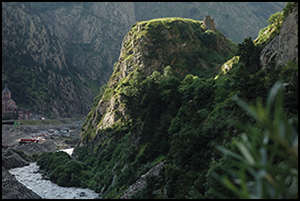Crossref Citations
This article has been cited by the following publications. This list is generated based on data provided by
Crossref.
Casana, Jesse
and
Glatz, Claudia
2017.
THE LAND BEHIND THE LAND BEHIND BAGHDAD: ARCHAEOLOGICAL LANDSCAPES OF THE UPPER DIYALA (SIRWAN) RIVER VALLEY.
Iraq,
Vol. 79,
Issue. ,
p.
47.
Lindsay, Ian
Rubinson, Karen S.
Greene, Alan F.
Hammer, Emily
and
Lawrence, Dan
2018.
Progress, problems, and possibilities of GIS in the South Caucasus: an international workshop summary.
Antiquity,
Vol. 92,
Issue. 362,
Wordsworth, Paul D.
and
Wencel, Maciej Mateusz
2018.
The Dramatic Abandonment of a Late-Antique Settlement in the South Caucasus: The First Archaeological Findings from Qaratəpə, Bərdə Rayon, Azerbaijan.
Journal of Field Archaeology,
Vol. 43,
Issue. 4,
p.
300.
Verdugo, Marta Pereira
Mullin, Victoria E.
Scheu, Amelie
Mattiangeli, Valeria
Daly, Kevin G.
Maisano Delser, Pierpaolo
Hare, Andrew J.
Burger, Joachim
Collins, Matthew J.
Kehati, Ron
Hesse, Paula
Fulton, Deirdre
Sauer, Eberhard W.
Mohaseb, Fatemeh A.
Davoudi, Hossein
Khazaeli, Roya
Lhuillier, Johanna
Rapin, Claude
Ebrahimi, Saeed
Khasanov, Mutalib
Vahidi, S. M. Farhad
MacHugh, David E.
Ertuğrul, Okan
Koukouli-Chrysanthaki, Chaido
Sampson, Adamantios
Kazantzis, George
Kontopoulos, Ioannis
Bulatovic, Jelena
Stojanović, Ivana
Mikdad, Abdesalam
Benecke, Norbert
Linstädter, Jörg
Sablin, Mikhail
Bendrey, Robin
Gourichon, Lionel
Arbuckle, Benjamin S.
Mashkour, Marjan
Orton, David
Horwitz, Liora Kolska
Teasdale, Matthew D.
and
Bradley, Daniel G.
2019.
Ancient cattle genomics, origins, and rapid turnover in the Fertile Crescent.
Science,
Vol. 365,
Issue. 6449,
p.
173.
Alizadeh, Karim
Rouhollah Mohammadi, M.
Maziar, Sepideh
and
Feizkhah, Mohmmad
2021.
The Islamic Conquest or Flooding? Sasanian Settlements and Irrigation Systems Collapse in Mughan, Iranian Azerbaijan.
Journal of Field Archaeology,
Vol. 46,
Issue. 5,
p.
316.
Fabian, Lara
2021.
Bridging the Divide: Marriage Politics across the Caucasus.
Electrum,
Vol. 28,
Issue. ,
p.
221.
Stone, David
2023.
The archaeobotany of Qaratepe, Azerbaijan 2nd–13th century.
Vegetation History and Archaeobotany,
Vol. 32,
Issue. 3,
p.
285.
Pogorevc, Neža
Dotsev, Arsen
Upadhyay, Maulik
Sandoval‐Castellanos, Edson
Hannemann, Elisabeth
Simčič, Mojca
Antoniou, Aglaia
Papachristou, Dimitris
Koutsouli, Panagiota
Rahmatalla, Siham
Brockmann, Gudrun
Sölkner, Johann
Burger, Pamela
Lymberakis, Petros
Poulakakis, Nikos
Bizelis, Iosif
Zinovieva, Natalia
Horvat, Simon
and
Medugorac, Ivica
2024.
Whole‐genome SNP genotyping unveils ancestral and recent introgression in wild and domestic goats.
Molecular Ecology,
Vol. 33,
Issue. 1,
Daly, Kevin G.
Mullin, Victoria E.
Hare, Andrew J.
Halpin, Áine
Mattiangeli, Valeria
Teasdale, Matthew D.
Rossi, Conor
Geiger, Sheila
Krebs, Stefan
Medugorac, Ivica
Sandoval-Castellanos, Edson
Özbaşaran, Mihriban
Duru, Güneş
Gülcür, Sevil
Pöllath, Nadja
Collins, Matthew
Frantz, Laurent
Vila, Emmanuelle
Zidarov, Peter
Stoddart, Simon
Boldgiv, Bazartseren
Orlando, Ludovic
Pearson, Mike Parker
Mullville, Jacqui
Askeyev, Igor V.
Askeyev, Arthur O.
Askeyev, Oleg V.
Shaymuratova, Dilyara N.
Van den Hurk, Youri
Zeeb-Lanz, Andrea
Arbogast, Rose-Marie
Hemmer, Helmut
Davoudi, Hossein
Amiri, Sarieh
Doost, Sanaz Beizaee
Decruyenaere, Delphine
Fathi, Homa
Khazaeli, Roya
Hassanzadeh, Yousef
Sardari, Alireza
Lhuillier, Johanna
Abdolahi, Mostafa
Summers, Geoffrey D.
Marro, Catherine
Bahshaliyev, Veli
Berthon, Rémi
Çakirlar, Canan
Benecke, Norbert
Scheu, Amelie
Burger, Joachim
Sauer, Eberhard
Horwitz, Liora Kolska
Arbuckle, Benjamin
Buitenhuis, Hijlke
Gourichon, Lionel
Bulatović, Jelena
O’Connor, Terry
Orton, David
Jalabadze, Mindia
Rhodes, Stephen
Chazan, Michael
Özkaya, Vecihi
Zeder, Melinda
Atıcı, Levent
Mashkour, Marjan
Peters, Joris
and
Bradley, Daniel G.
2025.
Ancient genomics and the origin, dispersal, and development of domestic sheep.
Science,
Vol. 387,
Issue. 6733,
p.
492.
